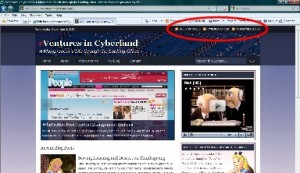 Google is adding live results from Twitter into searches this week, forever changing the nature of brand management. Now more than ever, you need to monitor your organization’s social media presence. You need to know right away if the live Tweet results include “worst service” or “sucks,” so you can diffuse these conversations and “push down” negative tweet search results.
Google is adding live results from Twitter into searches this week, forever changing the nature of brand management. Now more than ever, you need to monitor your organization’s social media presence. You need to know right away if the live Tweet results include “worst service” or “sucks,” so you can diffuse these conversations and “push down” negative tweet search results.
A common concern, however, is that monitoring social media takes too much time, especially for small- to medium-sized organizations. Here’s a plan for one person from a small- to medium-sized organization to monitor social media in 10 minutes a day:
- Check Twitter for chatter about your organization (4 minutes): Use tools like TweetDeck, Monitter, or Twitter’s search feature to monitor real-time conversations about your organization. To check once a day, set up an RSS feed using Google Reader.
- Use Google Reader to check other social media sites (2 minutes): Also include in your Google Reader subscriptions searches on your organization name, services, products, executives, or brand terms in Delicious, Digg, Reddit, and other social media sites.
- Scan Google Alerts (2 minutes): Check your Google Alerts for your organization name, services, products, executives, or brand search terms. To set this up, enter your search terms and select to receive daily updates (live is also an option). When your search terms are mentioned on the web, Google will alert you with an e-mail!
- Scan Social Mention Alerts (2 minutes): Just like Google Alerts, Social Mention Alerts are e-mail updates (but daily only) of the latest social media results (blog, microblog, etc.) based on your search terms. Social Media Alerts and Google Alerts produce different results, so it’s worth it to sign up for both.
Part Two of my “Your Brand” series will cover how to deal with real-time social reputation management.
 I love WordPress!
I love WordPress! 
